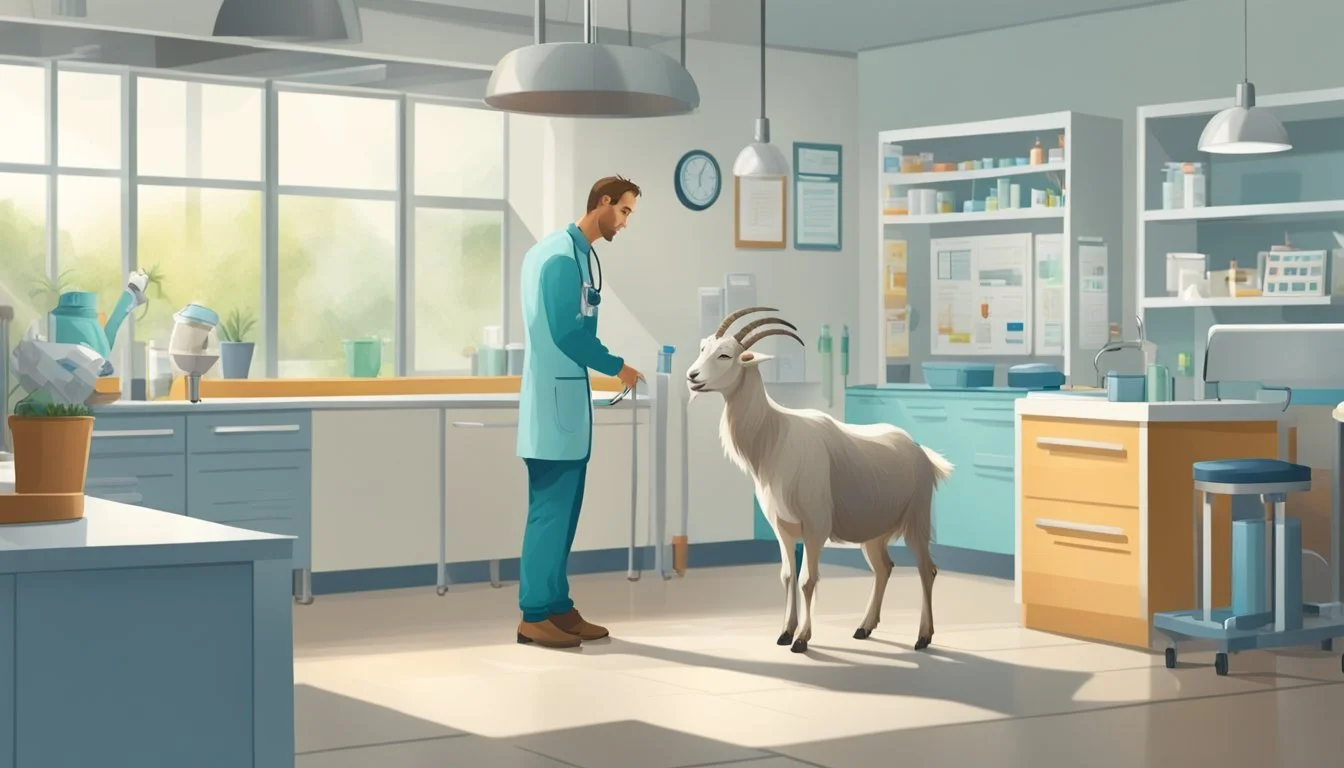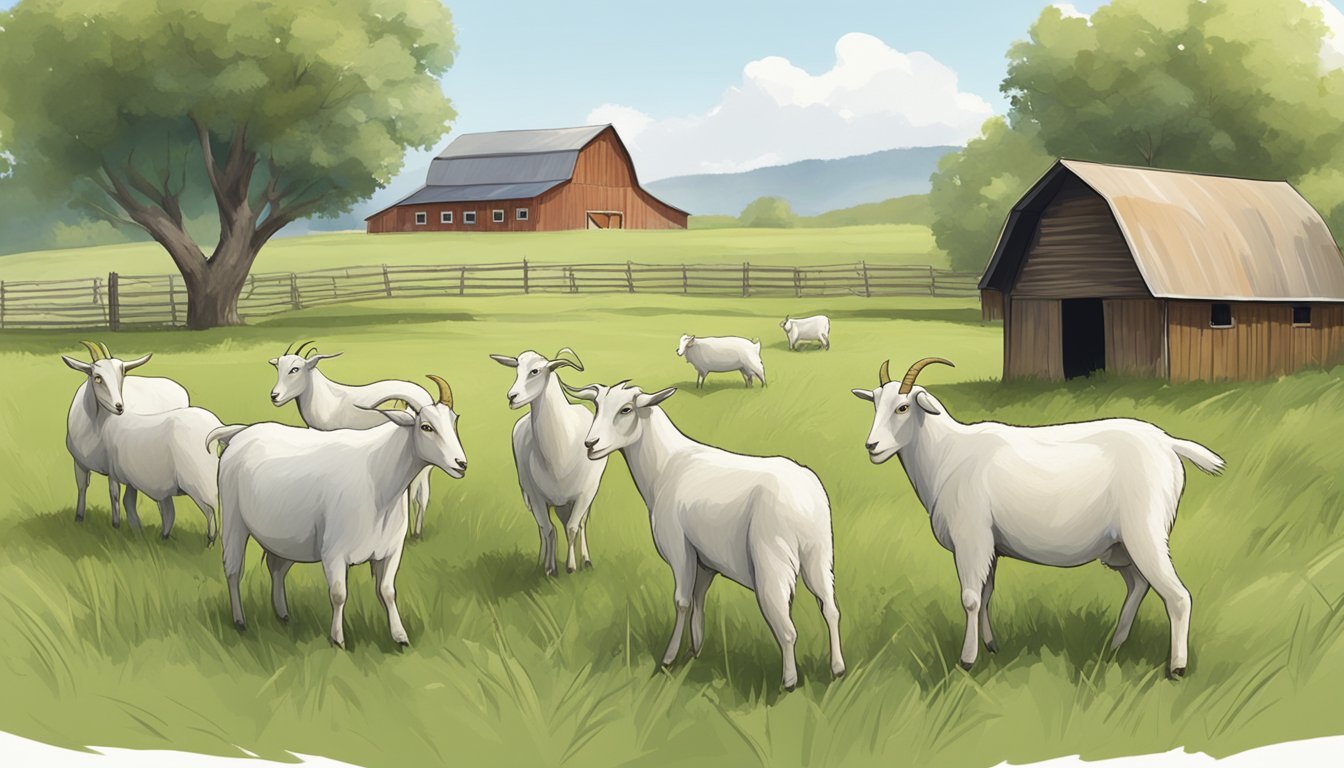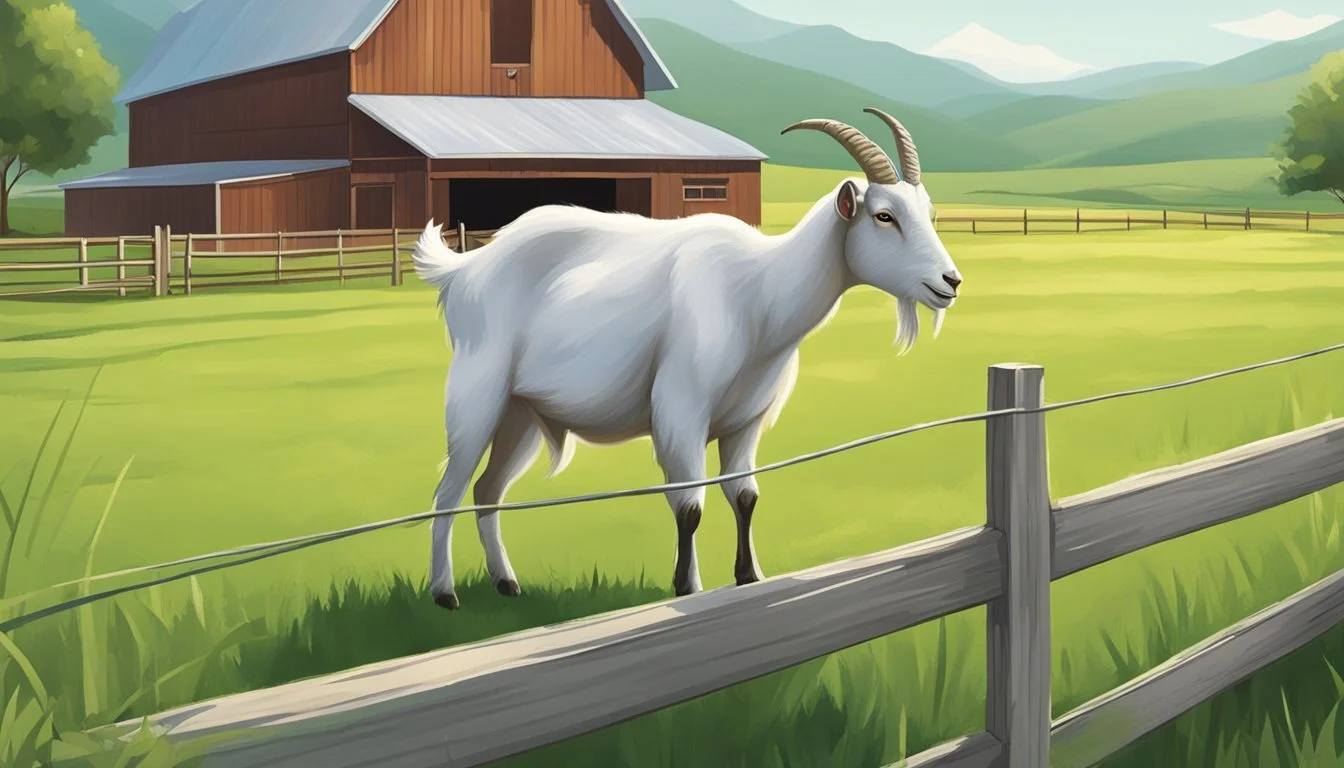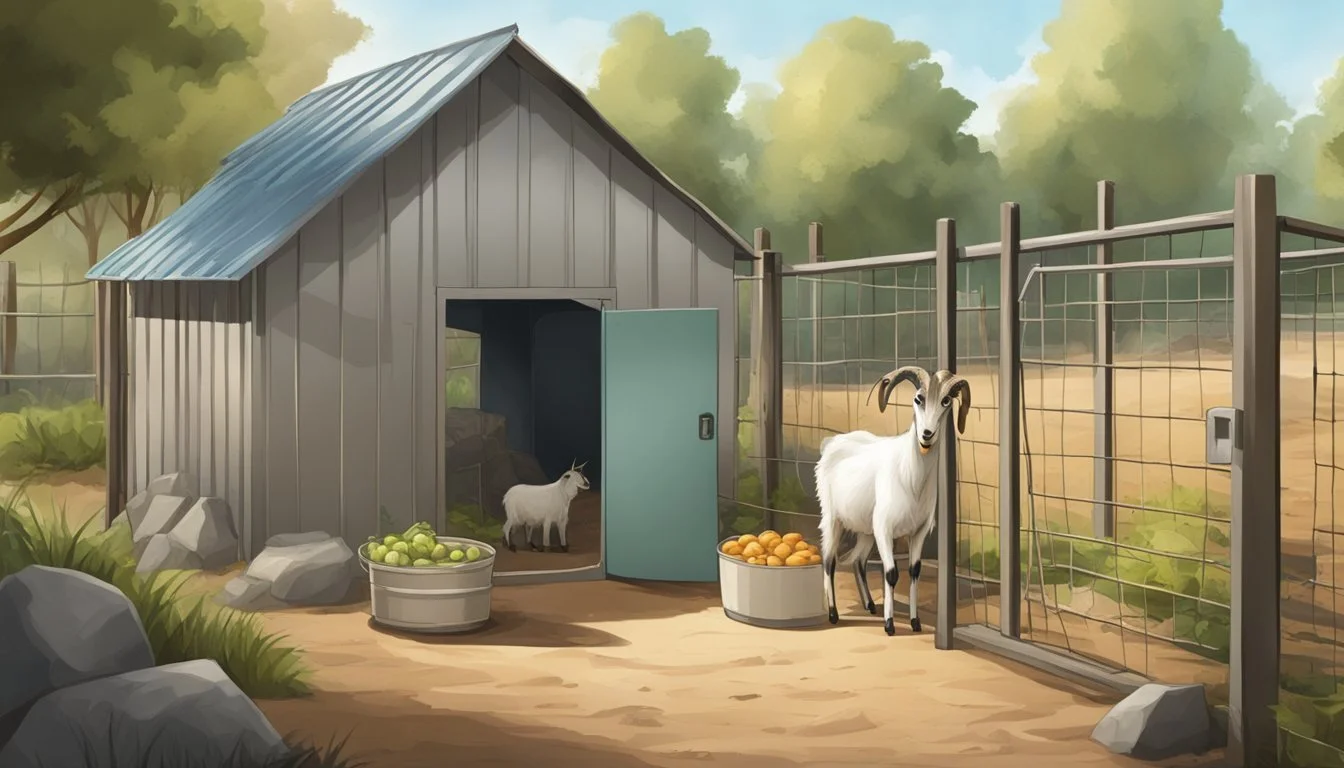How Much Does It Cost to Raise a Goat Per Year?
Breaking Down the Expenses
The cost to raise a goat varies significantly depending on numerous factors including breed, purpose, feed, healthcare, and housing needs. Typically, when considering the maintenance ration for a full-size goat, expenses for hay alone can range between $100 to $147.60 annually if the animal grazes on pasture for six months of the year, and up to $201.60 to $295.20 if hay is provided year-round. Beyond fodder, other essentials such as shelter, veterinary checks, and unforeseen medical costs add to the overall financial commitment of keeping goats.
When assessing the cost of raising goats for profit, additional considerations include the initial purchase price of the animal, which can fall anywhere between $50 to $300 or more depending on breed and sex. Profitable practices like dairy farming demonstrate a potential for income, with high-producing dairy goats capable of generating significant returns from milk sales; however, this also necessitates investment in milking equipment and processes in compliance with dairy sales regulations.
Thus, individuals interested in raising goats must prepare for a spectrum of costs, affected by the chosen purpose—whether for profit, as pets, or for personal sustenance. It is important for aspiring goat owners to carefully evaluate their goals, the specific needs of their chosen goat breed, and regional cost variations to establish a realistic annual budget for goat care.
Initial Considerations
When one begins the endeavor of raising goats, several initial considerations must be evaluated to determine the potential costs associated with this livestock venture. The breed of the goat significantly affects the cost, as some breeds require specific feed and care. Dairy goats, such as the Nubian or Alpine, are often raised for profit due to their high milk production, whereas breeds like Boer are preferred for meat production.
Key Factors Influencing Costs:
Breed: Some breeds excel in milk or meat production, influencing feeding and upkeep costs.
Age: Younger goats typically cost less upfront but may incur higher rearing expenses.
Sex: Does (female goats) may yield returns through milk or offspring, while bucks (males) are essential for breeding.
When raising dairy goats for profit, one must consider the initial investment in quality milking equipment and facilities. For those raising meat goats, the focus might be on providing ample grazing space to promote growth.
Profit-Driven Raising:
For dairy production, investment in good pedigree does can improve milk yield.
Raising meat goats requires attention to rapid and healthy weight gain for market readiness.
Understanding these factors can help farmers make informed decisions and estimate the annual cost of raising goats. While individual needs can vary, considering these elements is crucial for a successful and profitable goat farming operation.
Feeding Requirements
The annual cost of raising a goat is greatly influenced by its feeding requirements. The dietary needs vary between dairy and meat goats and change according to their stage of life, such as lactation or growth in kids.
Basic Diet
Goats need a basic diet of hay and pasture. Maintenance for a full-size goat requires around $100-147.60 per year in hay if they have access to pasture for half the year, and up to $201.60-295.20 if hay is provided year-round. Meat goats thrive on a diet that includes forages like weeds and woody plants. Dairy goats, which need more nutritional content to sustain milk production, benefit greatly from quality alfalfa hay due to its high protein and calcium content.
Supplements
Additional nutrients are often required to cater to the specific developmental and reproductive needs of goats. Goat minerals are necessary to ensure proper growth and health maintenance. They may include minerals such as selenium, vitamin E, and other essential trace elements. The diet for lactating goats should be supplemented with more energy-dense foods, like grain, to support milk production. The cost of these supplements will add to the overall goat cost throughout the year.
Specialty Feed
For bottle-fed or baby goats, specialty feeds such as goat pellets may be essential, especially when making transitions from milk to solid foods. These goat pellets are formulated to provide balanced nutrients, critical for early growth. Additionally, during certain times of the year such as winter, goats may require higher quality food options, as available forage can be too low in necessary nutrients to maintain proper health. The cost of specialty feeds can vary, but they are typically more expensive than the basic diet, impacting the overall expense in raising goats.
Housing and Shelter
When considering the cost of raising goats, one must account for the initial and ongoing expenses related to housing and shelter, which provide safety and comfort for the animals. These expenses can vary widely depending on the materials chosen and the climatic needs of the region.
Shelter Basics
Shelter is a critical component of goat care, protecting them from harsh weather and predators. A basic goat shelter needs to be sturdy and well-ventilated but doesn't require excessive complexity. Materials such as wood for framing and corrugated metal for roofing are commonly used. The cost for building or purchasing a pre-made shelter can vary, but owners should anticipate a range of expenses depending on the size and materials.
Bedding and Maintenance
Bedding provides a clean and comfortable resting area for goats, absorbing moisture and reducing the chance of health problems. Common bedding materials include straw, hay, or wood shavings. The related costs include both the price of the bedding itself and the labor for regular maintenance to keep the sleeping areas dry and clean. The cost associated with bedding will depend on the frequency of replacement and the local price of materials.
Space and Comfort
Adequate space and ease of movement are vital for a goat's well-being. The recommended space per goat varies with breed and size but generally ranges from 10 to 15 square feet inside of a shelter. Comfort extends to the pasture or grazing area, where fencing must be secure but flexible enough to prevent injury. The cost of fencing is an investment in the well-being of the herd and can prevent future losses due to escapes or predation. Regular inspection and maintenance of the fencing will incur additional costs but are necessary to ensure the longevity and effectiveness of the barrier.
Health and Veterinary Care
When raising goats, the costs for health and veterinary care can add up quickly, particularly because preventive measures are essential to avoid more significant expenses down the line. Key routine costs include vaccinations, deworming treatments, and regular checkups, which cumulatively play a crucial role in maintaining the herd's overall health and productivity.
Routine Medical Care
Goats require regular vaccinations to protect against common diseases such as enterotoxemia (overeating disease) and tetanus. The average cost of these vaccinations is approximately $5 to $10 per goat annually, based on the regional availability of vaccines and the specific health needs of the herd.
Additionally, an effective deworming program is vital for goats, as parasites can severely impact their health. The frequency and type of dewormer used vary depending on the environment and the herd's parasite load. On average, goats may need to be dewormed at least 2-4 times a year. The price for dewormers can range from $10 to $30 per goat each year, depending on the product used.
Veterinary costs for routine checkups also need to be factored in. A basic veterinary visit can cost about $50 to $100, not including any additional treatments or medications prescribed. For herds, some veterinarians offer herd health programs or annual packages, which can reduce the individual cost per goat.
It's important to note that these are estimated costs and can vary based on location, the individual needs of your goats, and unforeseen health issues that may arise. Regular medical care for goats is a significant investment in their welfare and a critical component of successful herd management.
Breeding and Reproduction
When considering the costs associated with raising goats, breeding and reproduction are significant factors. These processes can influence the overall costs through the need for proper mating strategies and managing newborns, each requiring different resources and attention.
Mating Strategies
For goat owners, choosing the correct mating strategy is crucial to managing costs and maintaining healthy bloodlines. Dairy goats, such as the Nubian goat, often require selective breeding practices to enhance milk production. Using a buck with proven bloodlines may involve stud fees, which vary but are a necessary investment for quality offspring and milk yield. Meat goats need a different approach, focusing on traits such as growth rate and carcass quality. Owners of Nigerian Dwarf goats, a popular dairy breed, must ensure that does reach at least 40 pounds before breeding to minimize health risks and secure a successful and cost-effective breeding season.
Managing Newborns
Post-birth, the costs associated with goat kids come into prominence. Initial expenses include basic healthcare, such as vaccinations and deworming, and potential veterinary costs for delivery complications. Adequate nutrition is crucial for newborns, especially for dairy breeds, to ensure the future milk production potential. For breeds that have multiple kids in one gestation, such as Nigerian Dwarf goats, this can multiply the cost and care required. Ensuring the kids are healthy and meet the breed standards for weight and growth can influence their value for future breeding or product yield.
In handling newborns, one must not underestimate the cost of time and labor. Monitoring the kids for the first few days to ensure they are feeding well and maintaining a healthy body temperature is crucial. Knowledgeable and attentive care for newborns lays the foundation for profitable goat farming whether your focus is on dairy or meat production.
Fencing and Security
When raising goats, ensuring their safety and preventing escapes are critical. The type of fencing chosen can have significant cost implications and should be tailored to the terrain and the specific needs of the goats.
Woven Wire Fencing: This is a popular option due to its strength and durability. It typically costs around $1 per foot, making it a cost-effective solution for larger areas.
Electric Fencing: Electric fences offer a deterrent for goats trying to escape and can be used in conjunction with other fencing types. Their cost varies based on length and quality of materials.
Wooden Fencing: Though aesthetically pleasing, wooden fences tend to be more expensive, both in installation and maintenance.
For a five-acre pen, one may consider the following initial fencing costs:
Fencing Type: Woven Wire
Average Cost per Foot: $1.00
Total Cost for Five Acres: $2,000.00
Fencing Type: Electric
Average Cost per Foot: $0.10 - $0.50
Total Cost for Five Acres: $200 - $1,000.00
Fencing Type: Wooden Board/Vinyl
Average Cost per Foot: $2.00 - $8.00
Total Cost for Five Acres: $4,000 - $16,000.00
These costs exclude additional expenses for gates, corner posts, and labor. The total cost of fencing for a year also depends on maintenance and potential repairs due to wear or damage from the animals or weather.
Goat owners must evaluate their land and the behavior of their goats to select the appropriate fencing. If the goats are known for being particularly active or strong climbers, sturdier and taller fencing options should be considered, adding to the overall goat cost for the year. Since goats require secure fencing to prevent predation and escape, this is an integral aspect of their annual maintenance cost.
Goat Care Supplies
Raising goats requires a range of supplies to ensure their health and well-being. Among these, hoof trimming is a crucial aspect of goat care. Goats' hooves grow continuously and can cause discomfort or even health issues if not maintained. Therefore, a set of quality hoof trimmers is essential, and their prices can vary depending on the brand and quality.
Feeding equipment also plays a vital role in a goat's daily life. A sturdy goat feeder helps minimize waste and ensures goats have access to clean hay. Options can range from basic feeders to more elaborate systems designed to prevent hay from becoming soiled or trampled.
Below is a summary of common goat care supplies and their associated costs:
Supply Category: Hoof Care
Items Included: Hoof trimmers
Estimated Cost: $15 - $50
Supply Category: Feeding
Items Included: Hay feeders
Estimated Cost: $50 - $200
Supply Category: General
Items Included: Water buckets, grooming brushes
Estimated Cost: $10 - $30
Other necessary items include water containers, mineral blocks, and grooming tools. These supplies are not only pivotal for daily maintenance but also contribute to a goat's overall quality of life.
When budgeting for goat care supplies, it's wise to consider the lifespan of these items. While some may require a one-time purchase, others, like mineral blocks and grooming brushes, may need to be replaced or replenished regularly. Prospective goat owners should anticipate allocating funds for these necessary expenses to ensure the health and happiness of their goats.
Farm Management
Effective farm management is crucial for optimizing costs and maximizing revenue when raising goats. It encompasses the efficient allocation of resources and the strategic care of both pasture and herd.
Pasture Management
One determines the health of their goats largely by the quality of the pasture they graze on. Therefore, diligent pasture management is essential for maintaining a nutritious and sustainable food source. A well-managed pasture reduces the need for purchased feed, and it requires:
Regular rotational grazing practices to allow grass to recover and prevent overgrazing
Control of invasive brush species to ensure the availability of high-quality forage
Adequate water access, such as clean water troughs, to maintain animal health
Fencing requires maintenance to keep the pasture secure from predators and to manage the movement of the herd effectively.
Herd Management
Herd management focuses on the well-being and productivity of herd animals. It includes careful selection of breeds suitable for the specific goal, whether it is raising goats for profit in meat, milk, or fiber production. Key aspects include:
Regular health checks and vaccinations to prevent disease and ensure the growth and longevity of the goats
Strategic breeding programs to improve genetic quality and herd productivity
Monitoring of individual animal growth rates, milk production, and overall health to inform management decisions
Efficient herd management looks to optimize the herd size to match the carrying capacity of the land and resources available. This balance is crucial for long-term sustainability and profitability.
Operating Costs
When raising goats, one must consider several significant operating costs. The primary expenses include feed, shelter, veterinary care, labor, and miscellaneous supplies.
Feed: Goats require a nutritious diet consisting of hay, grains, minerals, and possibly pasture. On average, the daily cost of feed per goat is around $0.82, adding up to about $299 annually. Grain prices typically hover around $0.36 per pound, and an average goat might consume half a pound per day.
Shelter: While the cost of shelter varies by location and the type of structure required, it's a necessary expense for protecting goats from adverse weather conditions. Building or adapting existing structures represents an initial investment and ongoing maintenance costs.
Veterinary Care: Regular health checkups, vaccinations, deworming, and emergency care are crucial. Goats may need a veterinarian's attention for various issues, and this cost can be the second largest in goat farming.
Labor: The cost of labor is a significant factor, especially in larger operations, and can range from $20,000 to $30,000 per year for a full-time farmhand.
Miscellaneous Supplies: This category may include fencing, bedding, milking equipment, and other farm supplies vital for daily operations.
In summary, various factors contribute to the annual operating costs when raising goats. Maintaining a keen eye on these expenses is crucial for successful goat farming.
Return on Investment
Raising goats can be economically rewarding if managed effectively. The primary revenue streams include the sale of milk, meat, and breeding stock. Dairy goats, known for their goat milk production, can be a lucrative investment. For instance, high-producing dairy goats can generate substantial income from the sale of milk or milk products like cheese and yogurt.
Meat breeds of goats also offer a significant return on investment due to the increasing demand for goat meat. The initial cost of raising a meat goat can be recouped once the goat reaches market weight. This is often achieved by focusing on feed efficiency and proper herd management.
Raising goats for profit requires a clear understanding of the costs involved in goat husbandry, such as feed, shelter, veterinary care, and labor. These costs can be balanced by maximizing the goats' productive outputs.
Investors in goat farming may achieve a higher return on investment by diversifying into high-value-added products. Value can be added by processing milk into specialized cheeses, which have a higher market price than plain milk.
Here's a simple breakdown of potential income streams:
Dairy Products:
Milk: Up to $36 per day from one goat[1]
Cheese: Specialty cheeses yield higher prices
Yogurt: Popular dairy derivative
Meat Sales:
Young goats: Meat from younger animals is in high demand
Mature goats: Usually sold for meat at a higher weight
By strategically managing production and capitalizing on market demands, goat farming can be a financially viable venture.
[1]: Ultimate Guide to Raising Goats for Profit - Rural Living Today
Breed-Specific Considerations
The costs associated with raising goats can vary significantly depending on the breed. Each breed type—dairy, meat, or fiber—has its unique care requirements and associated expenses that potential goat owners should consider.
Dairy Goat Breeds
Dairy goats such as the Nigerian Dwarf, Alpine, Saanen, and Toggenburg are bred for milk production. The Nigerian Dwarf is popular for its high butterfat milk, but due to its small size, it requires less feed compared to larger breeds like the Alpine or Saanen which can lead to lower feed costs. The Saanen goat is known for its large volume of milk production, which may increase potential revenue but also require higher feed and maintenance expenses. Owners of Toggenburg goats should note that while the breed is a consistent milk producer, it may require specific nutritional considerations to maintain this productivity.
Meat Goat Breeds
For meat goats, common breeds include Boer, Kiko, and Spanish goats. Boer goats are in demand due to their rapid growth rate and muscular build, but they may incur higher feed costs as they require ample protein to gain weight. Kiko goats are renowned for their hardiness and ability to thrive with lower-quality forage, potentially reducing feed costs. Spanish goats are known for their survival traits, lowering the need for medical interventions which can result in lower veterinary costs. The best breed of goat for meat often depends on the available resources and market demands.
Fiber Goat Breeds
Fiber goats like Angora and Cashmere produce mohair and cashmere, respectively. Angora goats require regular shearing and can be sensitive to the cold, which could mean additional costs for shelter and care. Cashmere goats need a diet rich in nutrients to produce high-quality fiber, which may increase feeding expenses. A consideration for those raising fiber breeds is the income potential from fiber sales, which can offset some of the higher maintenance costs associated with these breeds.
Market Dynamics and Demand
The demand for goat meat, often known as "cabrito," significantly impacts the cost of raising goats annually. In the United States, specific cultural and ethnic groups, such as Hispanics and Muslims, have a strong preference for goat meat, influencing market demand.
For instance:
Hispanics: Goat meat is a staple in many traditional Hispanic dishes, leading to consistent demand within these communities.
Muslims: Due to religious dietary laws, goat meat is a prominent feature during festivals and throughout the year.
These market demands dictate the pricing and the feasibility of raising goats for profit. They also influence the expense associated with the production, as farmers may need to invest in particular breeds or adjust their rearing methods to cater to these preferences.
Market prices can exhibit fluctuations; they are contingent upon factors such as:
Geographic location
Seasonal variations
Type of goat
Understanding these elements helps producers strategize on how to allocate resources effectively throughout the year to maximize their return on investment. It is reported that in Central Iowa, for instance, the cost of purebred bucks and does can exceed $500 per animal, hinting at the premium that can be commanded in certain locales and markets for quality stock.
In terms of housing, recommendations suggest that kidding areas with pens should measure 5 feet by 6 feet, implying infrastructure costs that are in part dictated by the intended scale of the operation and the market dynamics geared towards these demographics.
Producers must adapt and respond to these market dynamics to ensure success, as the demand from different groups provides opportunities for targeted marketing and pricing strategies.
Additional Revenue Streams
In addition to milk and meat production, goat farmers can explore several other revenue avenues to enhance their farm's profitability. Brush clearing services are increasingly popular, as goats naturally consume a variety of vegetation, making them eco-friendly alternatives for land maintenance. Farmers can offer their herds for hire to clear brush on private and public land, turning a typical farm task into a profitable venture.
Raising goats as pets is another potential income source. Certain goat breeds, known for their friendly nature and manageable size, are sought after as family pets. Farmers can market these animals directly to pet owners, tapping into the growing trend of keeping goats for companionship rather than solely for agricultural products.
The world of showing goats provides farmers with the opportunity to win prizes and gain recognition for the superior genetics and quality of their stock. Participating in goat shows can lead to increased farm visibility, higher sale prices for prize-winning animals, and potential revenue from breeding programs.
Service: Brush Clearing
Description: Renting goats to clear land of unwanted vegetation.
Service: Pets
Description: Selling goats to families seeking animal companionship.
Service: Showing
Description: Competing in shows for prizes and prestige, leading to higher sales and breeding opportunities
Farmers who embrace these diverse revenue streams can potentially offset the costs of raising goats and boost their farm's overall financial health.
Community and Networking
When raising goats on a homestead or small farm, community involvement and networking can significantly impact the endeavor's cost-efficiency. Farmers often join local agriculture groups where they can exchange tips, share resources, and sometimes engage in cooperative purchasing to reduce costs.
Local Farm Networks
Share bulk feed and supply orders
Exchange breeding stock to promote genetic diversity
Offer support during kidding season or in the event of illness
Facilitate equipment sharing or rentals
Online Farming Communities Fosters a platform for wider networking opportunities.
Access to a broader range of experienced goat keepers
Opportunities to learn about grants or subsidies for small farmers
Discovery of new markets or direct-sale opportunities
Agricultural Extension Programs
Provide educational resources and workshops
Update on best practices in goat husbandry
Notify about cost-sharing initiatives
4H Clubs and FFA
Ideal for those starting and seeking more hands-on experience
Can nurture relationships with future livestock buyers
Farmers should consider the roles these networks play in cost mitigation. Through these connections, one may find ways to save on veterinary bills via shared vet visits, learn about more efficient feed strategies, and gain insights on managing production costs for dairy or meat goats. Effective networking within these communities can lead to a more successful and sustainable goat-raising operation.









